Good Morning Master Class
Shore up your posterior chain – hamstrings, glutes, lower back – with the underrated Good Morning exercise.

Shore up your posterior chain – hamstrings, glutes, lower back – with the underrated Good Morning exercise.

The good morning exercise is one of the best ways to develop strength and muscle mass in the posterior chain, which includes, the glutes, hamstrings and spinal erectors. Think, “great ass,” whether you’re a male or female. ;)
Good mornings can also help to improve your strength on the deadlift, and the strength and power gains to the posterior chain this exercise provides transfer well to most sports.
If you’re unfamiliar with this exercise, it’s not because it’s new. Good mornings are actually a classic exercise that were popular decades ago among bodybuilders and other serious lifters. Since then, however, good mornings have become less common due to the misconception that it’s a dangerous exercise for the lower back.
Is it a dangerous move? Not if you do it correctly! Use good technique, and it will be a safe and effective exercise. This article will teach you why you should do good mornings, how to do them properly, and what not to do.
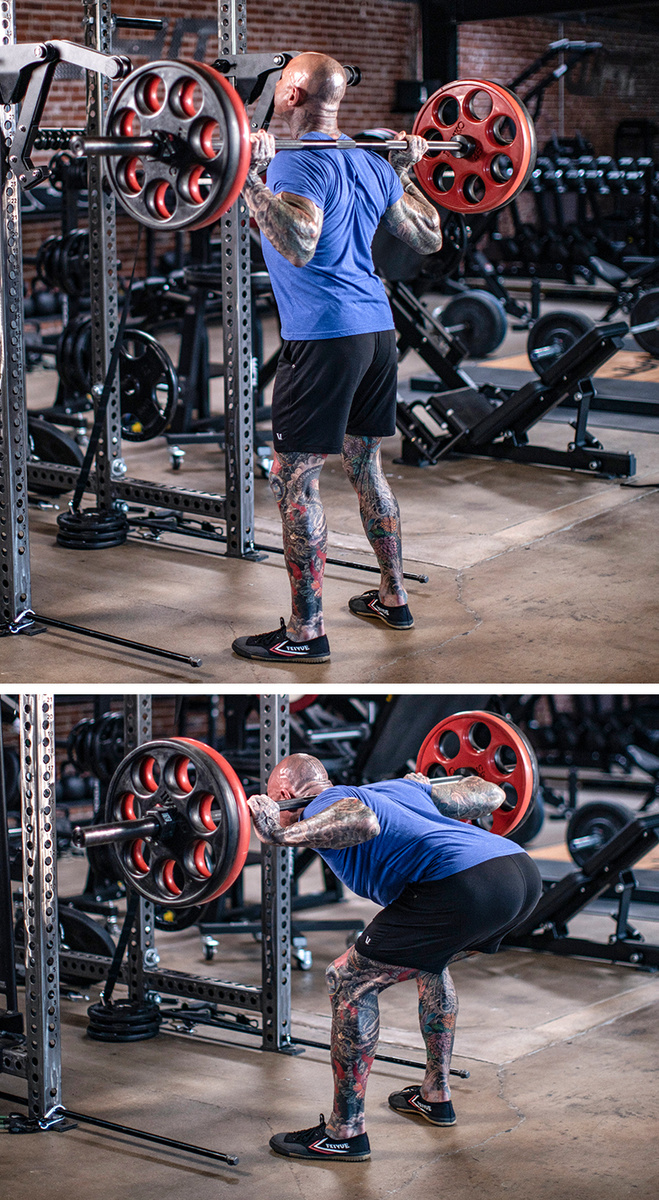
As I mentioned above, the main movers during the good morning are the glutes, hamstrings, and spinal erectors (lower back muscles). Therefore, the movement involves hinging at the hips, NOT at the waist. This means that as you hinge forward, you push your glutes back. This is a critical step in performing the good morning safely and effectively.
If you watch my form in the video included, you may notice that the movement pattern of the good morning exercise mimics that of the Romanian deadlift. The only difference between the two exercises is really where the weight is held.
On the Romanian deadlift, the weight is held in the hands in front of the thighs. With good mornings, the bar is held on the back/shoulders. Yet the movement pattern is similar for both. Hinge at the hips, allowing the glutes to trail back until the torso is about parallel with the floor. Then, use your glutes, hams, and lower back to extend back up.
If good mornings hurt your back because the resistance is on your upper back, sub in Romanian deadlifts. But if you can, it’s best to use both exercises in your program.
The first thing to concentrate on when doing good mornings is bar position. While you don’t want the bar too high on the traps, you also don’t want it too low on the back. The bar should be positioned somewhere on the lower part of the upper traps or middle traps and rear delts.
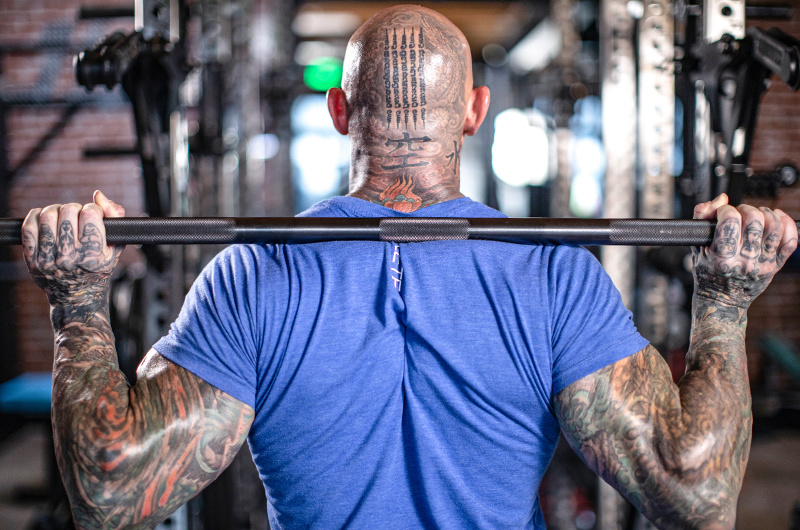
Hand position on the bar is also critical. Make sure that you hold the bar on your back with as narrow a grip as your shoulder flexibility will allow.
What does handgrip have to do with a proper good morning? Back position, that’s what. Holding the barbell with a narrow, tight grip will force the shoulder blades back and down, which will help to push your chest out and accentuate the arch in your lower back. It will also keep the bar from rolling up too high on your traps as you hinge forward.
The wider you hold the barbell with your hands, the harder it is to pull your shoulder blades back and down and push your chest out. This means you run a greater risk of rounding the back as you hinge forward, which can increase your risk of back injury.
To help you maintain a narrow, tight grip on the bar, focus on contracting your middle traps, rear delts, and lats as you support the bar on your back.
Training Tip: It’s a good idea to wear a full T-shirt (instead of a tank top) when doing good mornings. This will help prevent the bar from slipping out of place as your back position changes with the hinging.
Stand with a hip-width to shoulder-width stance for the good morning exercise. Your most comfortable squat stance is usually the best one for good mornings as well.
As you hinge forward, try spreading your toes like you're trying to grab the floor, and keep your weight over the balls of your feet. As you come back up and are closer to a standing position, you can move your weight back toward your arch and heels more as you focus on contracting the glutes and hams in the finish position.
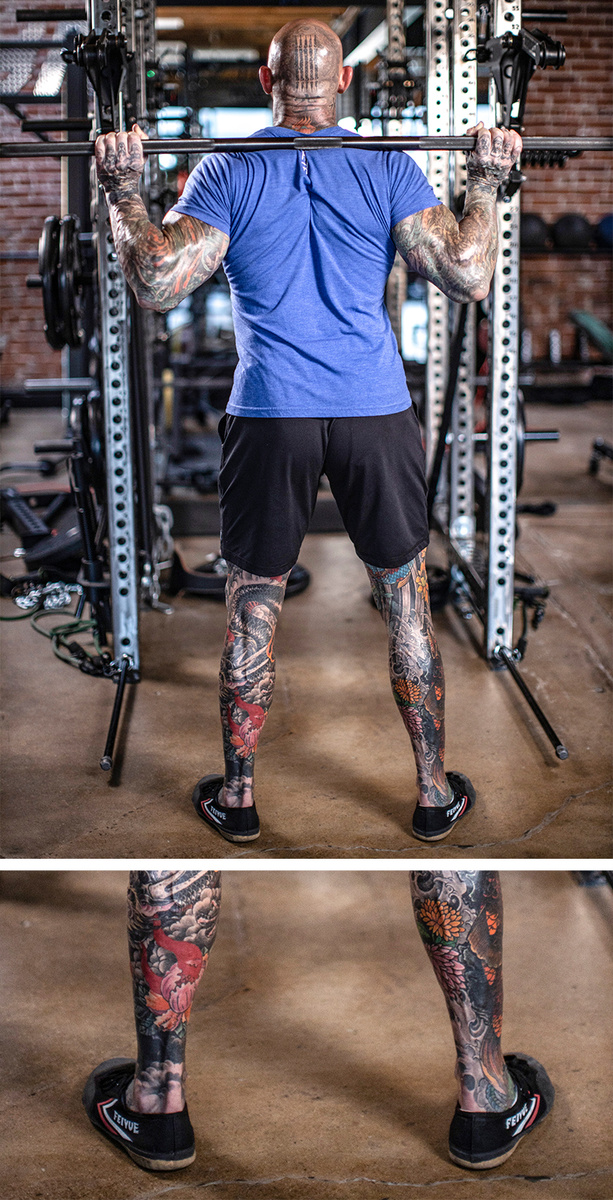
Another thing to focus on during the good morning is the movement of your glutes. The glutes need to glide back as you hinge forward. Again, think Romanian deadlift as you perform this exercise, as it’s the same hip action. If your glutes don’t travel back far enough, you’ll instead bend at the waist, which can stress your back and increase your risk of injury.
When you hinge forward, imagine that someone is standing right behind you and you’re trying to push them back with your butt. This will help you to hinge properly and avoid back injuries while maximizing the use of the target muscles (glutes, hams, and spinal erectors).
Start with your knees slightly bent. As you hinge forward, the lower you go, the more your knees will bend as you push your glutes back.
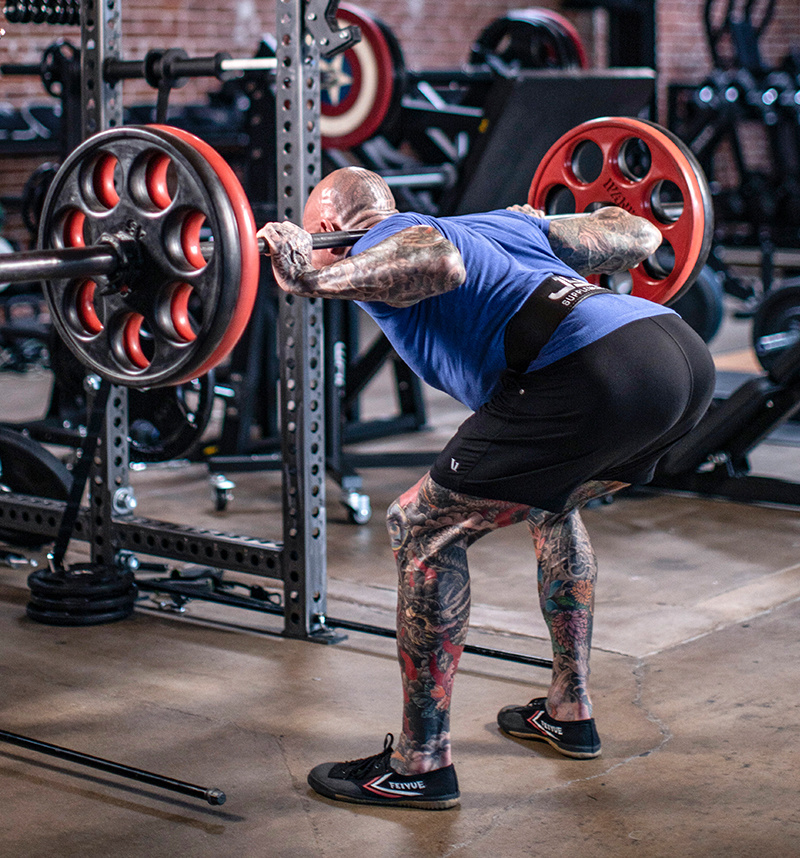
I mentioned above in the step-by-step instruction to lower down until your torso is roughly parallel with the floor. But if you’re not sure how low you’re going (because it’s tough to look in a mirror when doing this exercise) and want to make sure you’re going low enough, use a power rack for guidance.
Set the safety pins in the rack to the bottom position of the good morning – somewhere around hip height. Then, during the set, you’ll know that you’ve completed the full range of motion (ROM) when the bar taps the safety bars, notifying you that it’s time to hinge back up.
Aside from letting you know when you’ve reached parallel, the rack can also help for when you’re going to all-out failure; when you reach failure, you don’t have to worry about completing the next rep. Just dump the bar on the safety pins and exit.
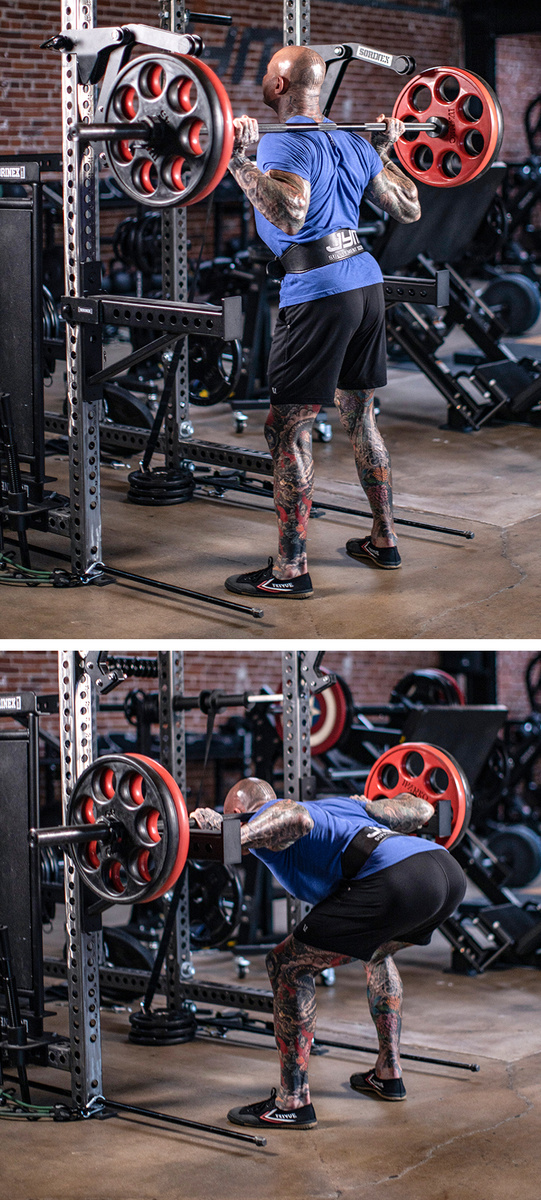
If the good morning is a new exercise for you, start with a light weight as you’re learning the movement. Once you are comfortable with the exercise, you can add weight and mix up your rep ranges. Like any exercise, consider using a variety of weight and rep ranges to keep progressing.
You’ll find the good morning exercise on Day 1 of my Muscle Booster SDS program (as well as others).
Related Articles